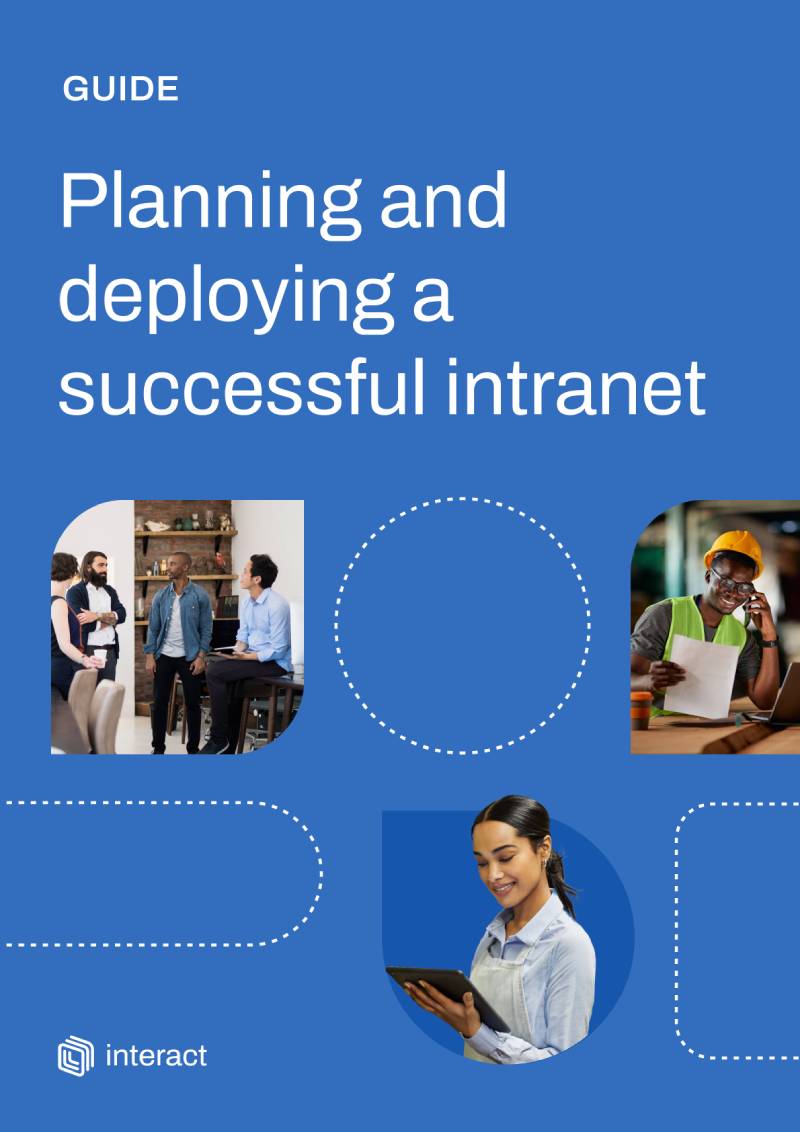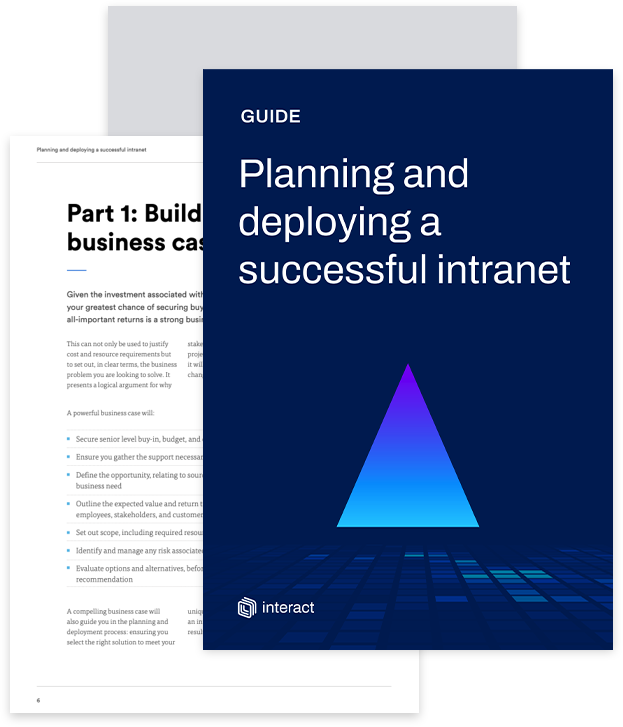Business leaders are currently anticipating the future of the workplace. With the success of remote working, but a desire by many to return to the office, organizations are making plans to develop a hybrid workplace where employees can benefit from working in a way that suits them.
A workplace revolution is taking place. As countries move in and out of COVID restrictions, most office-based businesses have taken the decision to stay working from home. But a new way of working is emerging: the hybrid workplace.
Returning to a pre-pandemic age is no longer possible. The impact of COVID has changed almost every aspect of life, and when it comes to working alongside large groups of people, the traditional workspace was one of the first things to disappear.
Back in Spring 2020, there were concerns that the wheels would inevitably fall off the mass working-from-home experiment. But aside from a few shortcomings, most organizations have been surprised by its success.
But attention has recently been turned back to the role of the office in a post-pandemic world. Does the bricks-and-mortar office offer any benefits to the employee and the organization as a whole? Is there a space where we can experience both remote and in-office working? The answer emerging is a hybrid workplace, a place that combines the best of both worlds.
What is the hybrid workplace?

It is clear that the office still offers a variety of benefits that remote working struggles to replicate. But at the same time, many workers are enjoying the ease that remote working provides. Therefore, the hybrid workplace is the perfect compromise that offers the benefits of both styles of working simultaneously.
While it almost feels like a by-product of the chaos of pandemic restrictions, the hybrid workplace is a working model that offers more flexibility – an idea that sees productivity and enterprise occur both remotely, and in-office. This model enables people to work where they want: to enjoy the ease of home working with the collaborative aspects of the traditional office.
While en-masse remote working was forced upon most organizations, it’s an idea that has been years in the making. Working from home, or at least outside the physical boundaries of the office, has long been mooted but never put into widespread practice. Remote working was hampered by too many ‘what ifs’: What if productivity slips? What if this style of working breaks the trust we have with our employees? What if the culture we’ve worked so hard to build disappears?
“Leaders across the board were shocked and amazed how quickly all their workers made the transition (to remote working) once they had the equipment — and by how productive everyone has been.”
Suzanne Adnams, Gartner analyst.
But when it was finally rolled out, albeit by necessity, remote working was a success. This is down to a number of reasons: it offers flexibility; it provides a greater degree of autonomy; there are fewer interruptions, and a work-life balance feels a lot more achievable. For many roles, workers no longer have to fit around scheduled hours but fulfill their required hours at times that suit their productivity levels. Combine that with no longer having to endure a costly and time-consuming commute, and you have a very employee-friendly working model.
Tasked with improving your internal comms?
But the traditional office isn’t dead. There are still many reasons why a more formal working space is still a critical part of organizational life. Remote working doesn’t offer everything. When it is safe to do so, offices will provide a far more effective place to collaborate, hold seminars, training, and group tasks. And some workers, particularly those who experience unreliable home broadband, have busy households, or who want more sociability, prefer office working. The hybrid model will cater to every employee. This is a historical moment that, for the first time ever, gives employees the option to choose how they work.
“55 percent of US workers would prefer a mixture of home and office working.”
Stanford survey
And of course, organizations can interpret the hybrid model as they see fit. Some businesses may require a skeleton staff in the office five days a week. Others may need employees to work a minimum number of days onsite. The hybrid aspect of working will vary depending on the requirements of each business.
Regardless of this, the hybrid workplace offers more options to employees than ever before.
The benefits of a hybrid workplace

Because the hybrid workplace offers so much flexibility, it carries many benefits to both employee and employer, including:
Flexibility: The workplace is, for the first time, fitting the needs of the employee, rather than the other way around. This means that workers are able to work as they see fit. In some roles, this could even affect the hours they work, enabling them to fulfill their required hours at the times when they are most productive.
Reduction in commute: employees are no longer herded into the office by a specific time each day. The decrease in traffic, congestion, stress levels, and wasted time will be a massive advantage to employees.
Less spend on commercial real estate: Businesses can rework their current office space to smaller, more tailored areas for new ways of working.
A wider talent net: Recruiting locally is no longer entirely necessary. Now businesses can cast their nets further and take advantage of skill sets further afield.
While there are many advantages, how can businesses progress successfully with dispersed and in-office employees? The answer lies in choosing the right tools and tech.
How can an intranet help build the hybrid workplace?

Arguably, the intranet not only helps build the hybrid workplace, but is central to it. With so many features to the software, it’s an essential part of futureproofing an organization to new, evolving ways of working. In terms of balancing a hybrid workforce and in-office employees, an intranet can help in many aspects, including:
1. Connects people, regardless of location

In the hybrid workplace, the location of your employees will remain dispersed. There will be employees working from home, commuting in, and logging on from the other side of the globe. But with an intranet, location is no longer an issue. With a diverse range of tools within the software, an intranet helps maintain contact with employees and the organization regardless of where they are.
Tasked with improving your internal comms?
While intranets had widespread use in global enterprises with multiple offices, they have also been particularly essential for connecting medical staff, retail workers, warehouse employees: any organization that needs to connect with their non-desk-based workforce. Now, with desk-based workers choosing where they work, more and more organizations need to maintain contact with a largely invisible workforce.
2. It’s the center of the digital workplace

The digital workplace is a concept that has been well-honed pre-pandemic, and for most organizations, there has already been a need to push through new tools, platforms, or processes at a pace. But despite 70% of organizations either having a digital transformation strategy in place or actively working on one, it’s safe to assume the rapid turn of events in 2020 probably sped up or changed those transformation initiatives from the original plan.
As we adjust to hybrid working as a more permanent fixture, it’s time to think about how digital workplaces are shaped, and how an intranet can form the basis of this digitalization. This software is adept at supporting an organization through a variety of features: social tools, rich content, promotion of mission statements and company values, success stories, employee recognition, and as a platform to give greater visibility to individual talent and skills within every department.
3. Promotes senior-level visibility

Many businesses, particularly global organizations, have always struggled with senior leader visibility. In a hybrid workplace, this may feel like a more significant problem, but keeping your dispersed employees informed and updated isn’t as difficult as it first appears. An intranet means that there are plenty of ways to ensure that the workforce feels a connection with the senior level. One of the most effective methods is to up the frequency of comms. The regular contact of a senior figure can become synonymous with visibility.
Creating a dedicated space on the intranet homepage for the CEO to post can be another way of maintaining employees’ attention. These don’t have to be long missives – a microblog is a quick and easy way for the head of the company to touch base, eg: ‘Today I’m in the office finding out how hybrid working is going for some of our employees’. Leadership visibility acts as reassurance that the business is proactive, listening, and taking charge – and the intranet is the perfect platform for this.
4. Transforms communication

One of the first go-to solutions for organizations working out their cross-departmental communications is to invest in a comms platform or intranet. This is the ideal foundation on which to position all communications across the business. Through blogs and updates, to forum posts, comments, and likes – this is a great environment to drive business comms, as well as enjoy a more social experience.
And as everyone has access to the intranet from their device of choice, a cloud-based platform like this is perfect for a dispersed workplace. When it’s impossible to meet every co-worker, the intranet hosts a staff directory that carries a mini-bio and contact details of each employee, so users can get a better idea of who they’re about to contact, before they’ve even introduced themselves.
5. Broadcasts critical information

As we’ve seen with the coronavirus pandemic, a crisis has the potential to hit at any time. When you need to confirm staff safety, execute emergency protocols, distribute information and manage response efforts, having the right tools is essential. As a crisis management tool, your intranet has a critical role to play.
For every business, an intranet acts as a central information point for employees on a day-to-day basis. So it makes sense that in an urgent situation when getting information flowing is critical, an intranet can become a powerful platform to support effective crisis management.
But it has taken a world-changing event like the pandemic for organizations to realize how important it is to have a safety net like an intranet implemented: both for ordinary business – and the extraordinary. An intranet can empower employees: and so these employees will be more able to understand their roles, responsibilities, the necessary escalation procedures, and support a more effective response to any crisis.
6. Unlocks collective intelligence

A hybrid workplace could potentially encounter problems with the sharing of information and ideas. How do you channel the skills, knowledge and talent that lie within your business to benefit everyone?
As a workforce, your employees have learned and retained a lot of information. But one of the biggest challenges within any business is the inability to unlock this collective knowledge. When knowledge is only transferred verbally, and leaves with the departure of an employee, it creates a huge drain on the resources of a company.
Using an intranet, you can tap into your collective knowledge through the use of several tools, in particular, group forums. This is the ideal environment for employees, regardless of where they are, to ask questions, start a discussion, or invite and share ideas. Co-workers can then interact with posts to keep the discussion going further. The intranet contains this information safely within the realms of the business but allows it to be easily accessible through the use of intelligent search.
Tasked with improving your internal comms?
Forums also enable employees to use this centralized platform to brainstorm ideas and solutions to problems. Creating a culture of open communication, the intranet promotes idea sharing and enables feedback and voting on the best ideas and suggestions.
7. Targets communications

Every organization has a huge mix of people and an inherent need to communicate with them. But some messages are only relevant to a small minority, perhaps you want to send your comms to those who work remotely, or those who use the staff car lot. Perhaps it’s an update for those who belong to organizational committees, or a notice for those who work the late shift. The problem is, when you ‘send all’ with your comms, you start losing people’s interests. Employees start to subconsciously sign out, stop taking notice, and move their focus elsewhere.
For the hybrid workplace, where there are so many variations in location, working hours, communication methods, you need a comms solution that can send targeted messaging to a select number of employees. Modern intranet software is perfect for this, allowing you to split your audience up into personas, and send messages to a defined group of people outside of department or status. For example, you have important information to send to everyone who is a certified first aider. You can do this by choosing those fields you wish to focus on with the help of a personas tool.
When you deliver specific, targeted communication, you are directing messages to your workforce that are relevant and should therefore be responded to. This results in meaningful, impactful comms that are seen, understood, and acted on.
8. Provides insights

Digital transformation means that we’re able to access more data than ever before, and develop better capabilities for capturing, analyzing, and understanding it.
A lot of analytics focus on the customer, and how to make the product or service more attractive to the consumer. We invest time and money into working out customer trends, spending habits, the times they’re most likely to be online. Why do we not focus similar levels of attention on the behavioural patterns of our employees? Particularly in the aftermath of such change and the arrival of hybrid working, analyzing data on the employee experience is vital.
Most modern intranet software offers a range of analytics to measure everything from content analytics and search analytics to ways of measuring the value and ROI of your new comms tool. With the help of analytics, we can make strategic decisions based on real-time information already residing in our organizations. We can deliver tangible, measurable value at every level, from the individual employee to the business and its shareholders.
9. Supports remote onboarding and enrolling

While a hybrid workplace will mean some enrolment and onboarding can be carried out in person, this might not be an option for every new employee. Businesses have been struggling with this area since working from home was enforced. While welcoming new employees and making them feel part of the business has always been a challenging part of the employee lifecycle, doing onboarding remotely has made the process even more complicated. How can you put someone at ease and let them experience the culture of your organization when they’re sat in front of a laptop in their spare room?
An intranet should be a big part of the new starter onboarding process and play host to the wide range of training and introductory videos. Through the system, all new employees joining remotely can be introduced to key figures within the business and have a buddy-style mentor to check in with on a daily basis. The intranet can provide other online areas like blogging, directories, instant chat, and other communication tools so the new user can become instantly connected to the business. Videos, messages, an explanation of your organization’s core values, and a preview of some past company events will all give a great impression of the workplace culture, whether the recruit is remote or in-house.
10. Supports dispersed employees via app

The ability to access your organization’s digital workplace anywhere has been prioritized in the recent crisis. The intranet has been a common link between the HQ and the workforce, which means that it’s important that users can access it anywhere, even to obtain confidential data.
Mobile apps are fundamental in accessing and sharing information, connecting with each other, and receiving updates from the senior level. During the COVID-19 crisis, mobile intranets were fundamental to frontline key workers in hospitals who needed access to newly formed protocols and procedures on the go. Without this critical link, there would be a significant gap in communications with those people who need it most. If your intranet isn’t mobile yet, it’s must be a priority going forwards.
And a mobile intranet isn’t simply an information channel. It helps promote social use, so staff can also comment, share, and like posts; engaging as active participants in their organization. The organization can then bridge the gap between employees and those on a higher level which helps employees understand the impact of their work and the mission of the organization, along with how they fit into overall company goals. This has long been an issue with non-desk-based employees, and an intranet app that sits on a cellphone can act as a major engagement tool to those without daily access to computers.
11. Promotes a workplace culture

For most organizations, the office represented the beating heart of company culture: the chatter, jokes, collaboration, social events, and teamwork that made the business what it is. But with no bricks and mortar office to attend at the moment, the office space is now virtual, manifesting itself in areas within the digital workplace. This lack of physicality has seen innovative ways of using online space, converting areas of the digital workplace into hangout areas, meeting rooms, departmental areas, and one-to-one spaces. Workers are now mimicking their office space within these individual digital tools: whether it’s for private chats, group discussions, quiet space or social use.
The office intranet fulfills its role as the virtual office HQ, with people from all areas of the business posting reminders, blogs, scheduling meetings, and sharing advice to the organization as a whole. Workers log on to the intranet to keep abreast, not just of business, but of the people and culture within it as well. For remote workers, all the liveliness of an office has been transferred digitally, and the more employees adjust to this new way of working, the more nuanced this online culture will become.
The hybrid workplace, with its marrying of both office life and remote working, offers an exciting future for employees. With no further requirement to house pens of desks, the office HQ is set to be transformed. New, creative uses will come out of this transformation, and will see a greater focus on group work, idea sharing, and a creative and collaborative desire that has been left wanting during the pandemic. This evolving burolandschaft will see further changes as offices alter their layout to suit the desires for connection and collaboration from employees.
But what precedes this brave new world is sourcing the right tech, and preparing your workforce for the ensuing changes and modifications. While 2020 provided a steep learning curve, we need to now take onboard what our employees need to adapt to new ways of working. Comms tools, intranet software, effective training programs and leadership that is communicating the new way will all ensure that a hybrid workplace unfolds at a natural pace that allows our workforce to remain productive, engaged and empowered.



